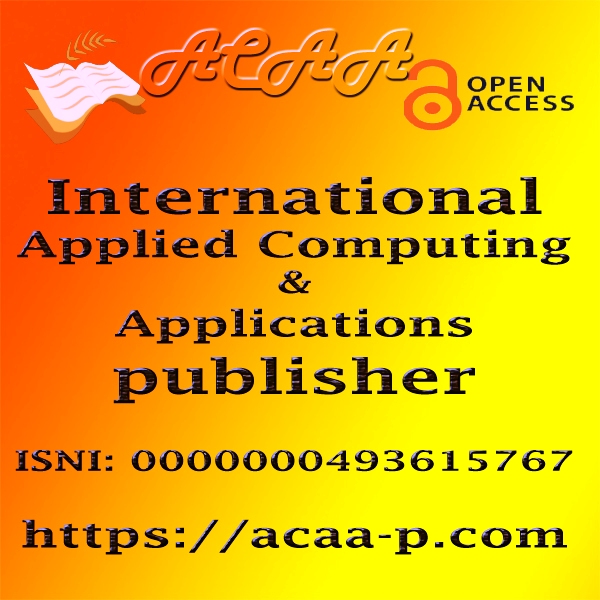Software Papers & Publications
New mathematical model for software quality prediction of component-based software using shuffled frog-leaping algorithm
Customer satisfaction and profit making are the two motives that define software quality; therefore, software industry uses new technologies like component-based software engineering, re-engineering, etc., to make their software production more profitable. The proposed mathematical model is executed under ISO/IEC 9126 quality assurance model and justifies the definition of software quality given by IEEE 1061(1998). The model calculates the degree of stakeholder satisfaction (Q) by combining the quality attributes and it is validated using Shuffled Frog-Leaping Algorithm (SFLA) which improved the result by 2.46%
Implementation of big data analytics for simulating, predicting and optimizing the solar energy production
The notable developments in renewable energy facilities and resources help reduce the cost of production and increase production capacity. Therefore, developers in renewable energy evaluate the overall performance of the various equipment, methods, and structure and then determine the optimal variables for the design of energy production systems. Variables include equipment characteristics and quality, geographical location, and climatic variables such as solar irradiance, temperature, humidity, dust, etc. This paper investigated and reviewed the current big data methods and tools in solar energy production. It discusses the comprehensive two-stage design and evaluation for examining the optimal structure for renewable energy systems. In the design stage, technical and economic aspects are discussed based on a robust analysis of all input/output variables for determining the highest performance. Next, assess and evaluate the effectiveness of each method under different circumstances conditions. Then convert each qualitative indicator into a quantitative measure using extensive data analysis methods to determine the overall performance of the various qualitative variables. The paper also provides an in-depth analysis of the mathematical techniques used in measuring the efficiency of the renewable energy production system and discussing future axes of work in the field of specific energy.
A systematic evaluation of research on social engineering attacks prevention
Social engineering is a method of information security that allows for system or network access. When victims are unaware of techniques, models, and frameworks to prevent them, social engineering attacks happen. In order to stop social engineering attacks, the current research describes user studies, constructs, assessment, concepts, frameworks, models, and techniques. Sadly, there isn't any specific prior research on mitigating social engineering attacks that thoroughly and efficiently analyzes it. Health campaigns, human security sensor frameworks, user-centric frameworks, and user vulnerability models are examples of current social engineering attack prevention techniques, models, and frameworks. Guidance is required to examine cybersecurity as super-recognizers, possibly acting as police for a secure system, for the human as a security sensor architecture. This research aims to critically and systematically analyze earlier material on social engineering attack prevention strategies, models, and frameworks. Based on Bryman & Bell's methodology for conducting literature reviews, we carried out a systematic review of the available research. Using a protocol, we discovered a novel strategy to stop social engineering assaults in addition to approaches, frameworks, models, and assessments, based on our review. We discovered that the protocol can successfully stop social engineering assaults, including health campaigns, the susceptibility of social engineering victims, and co-utile protocol, which can control information sharing on a social network. This comprehensive evaluation of the research is what we're presenting in order to suggest safeguards against social engineering assaults.
Enhancing viral pneumonia diagnosis accuracy using transfer learning and ensemble technique from chest x-ray images
Pneumonia is an acute pulmonary infection that can be caused by bacteria, viruses, or fungi. It infects the lungs, causing inflammation of the air sacs and pleural effusion: a condition in which the lung is filled with fluid. The diagnosis of pneumonia is tasking as it requires a review of Chest X-ray (CXR) by specialists, laboratory tests, vital signs, and clinical history. Utilizing CXR is an important pneumonia diagnostic method for the evaluation of the airways, pulmonary parenchyma, and vessels, chest walls among others. It can also be used to show changes in the lungs caused by pneumonia. This study aims to employ transfer learning, and ensemble approach to help in the detection of viral pneumonia in chest radiographs. The transfer learning model used was Inception network, ResNet-50, and InceptionResNetv2. With the help of our research, we were able to show how well the ensemble technique, which uses InceptionResNetv2 and the utilization of the Non-local Means Denoising algorithm, works. By utilizing these techniques, we have significantly increased the accuracy of pneumonia classification, opening the door for better diagnostic abilities and patient care. For objective labeling, we obtained a selection of patient chest X-ray images. In this work, the model was assessed using state-of-the-art metrics such as accuracy, sensitivity, and specificity. From the statistical analysis and scikit learn python analysis, the accuracy of the ResNet-50 model was 84%, the accuracy of the inception model was 91% and lastly, the accuracy of the InceptionResNetv2 model was 96%.
Jacques Bazemon
Université Nazi Boni
Dr. Md Manzar Alam
Central Council For Research In Unani Medicine, Ministry Of Ayush, Government Of India, New Delhi
Most Popular Category
- Pharmacy (270)
- Education and social science (224)
- Pharmacology (220)
- Pharmacognosy (178)
- Business management (147)
- Pharmacology and toxicology (133)
- Pharmaceutical sciences (130)
- Education and training (129)
- Medicine (124)
- Research (123)
- Health Science (100)
- Management (98)
- Biological Sciences (97)
- Computer Science (92)
- Computer Science Applications (85)
- Public health (83)
- Human resource management (83)
- Engineering (77)
- Accounting and finance (73)
- Information technology (68)
 ACAA PUB
ACAA PUB